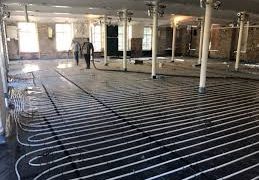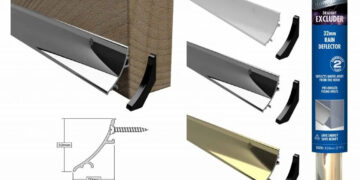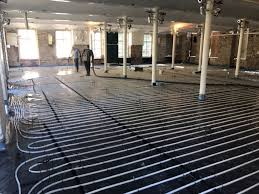Underfloor heating is no longer a luxury limited to high-end homes or grand renovation projects. With advances in technology and growing demand for energy-efficient heating, underfloor heating panels have become increasingly popular in homes across the UK. If you’re considering upgrading your heating system or simply curious about how underfloor heating panels work, this guide will walk you through everything you need to know.
What Are Underfloor Heating Panels?
Underfloor heating panels are an integral part of a radiant heating system designed to heat your home from the floor up. Instead of using traditional radiators that heat the air near them, underfloor systems distribute heat evenly across the entire floor surface. The panels themselves can be used with either electric or water-based (hydronic) systems, depending on the type of installation.
These panels sit beneath your floor covering and contain either electrical heating cables or water pipes, depending on the system you choose. The result is a comfortable, consistent temperature throughout your living space, with no cold spots or noisy radiators.
Types of Underfloor Heating Systems
1. Electric (Dry) Underfloor Heating Panels
Electric systems use a network of cables or mats embedded into heating panels. These systems are typically easier and quicker to install, especially in retrofit projects. Electric panels are ideal for single rooms such as bathrooms or kitchens, as they’re more cost-effective for smaller areas.
Pros:
-
Quick installation
-
Minimal floor height increase
-
Ideal for small or renovated spaces
Cons:
-
Higher running costs compared to water systems
-
May not be suitable for whole-house heating
2. Water (Wet) Underfloor Heating Panels
Water-based systems use pipes embedded in panels to circulate warm water from your boiler or heat pump. These systems are generally more energy-efficient in the long run and are well-suited for new builds or large renovation projects.
Pros:
-
Lower long-term running costs
-
Energy-efficient, especially with renewable heat sources
-
Suitable for whole-home heating
Cons:
-
More complex installation
-
Higher upfront cost
What Flooring Works Best?
One of the most common questions about underfloor heating is whether certain types of flooring are more compatible. In general, tile, stone, and laminate work particularly well due to their high thermal conductivity. These materials allow heat to transfer quickly and evenly.
Wood can also be used, but care must be taken to choose engineered wood with a stable core that can tolerate temperature changes. Carpet is less efficient, but it’s still possible if the carpet and underlay have low thermal resistance.
Always check with both your flooring supplier and heating panel manufacturer to ensure compatibility.
Benefits of Underfloor Heating Panels
1. Comfort and Even Heating
Because heat rises from the floor, underfloor heating provides a more uniform and pleasant temperature across the room. There are no cold spots or draughts, making it especially comfortable in winter.
2. Energy Efficiency
Underfloor heating operates at lower temperatures than radiators while still providing the same level of warmth. This can result in lower energy consumption, especially when used with modern thermostats or smart home systems.
3. Space Saving
Say goodbye to bulky radiators. Underfloor panels free up wall space, allowing for greater flexibility in room design and furniture layout.
4. Silent Operation
Unlike some radiators or forced-air systems, underfloor heating is virtually silent, contributing to a more peaceful home environment.
Installation Considerations
New Builds vs Retrofits
Underfloor heating is often easier to install in new builds, where the system can be integrated into the initial design. Retrofitting underfloor panels into an existing home is possible but may require lifting floors and adjusting door heights.
Insulation Is Key
Proper insulation beneath the heating panels ensures that heat is directed upward into the room rather than being lost into the ground. Investing in good insulation will significantly improve efficiency and performance.
System Controls
Modern underfloor heating systems come with digital thermostats or smart controls, allowing you to schedule heating and adjust temperatures by room. Some systems even integrate with smart home devices like Alexa or Google Home.
Maintenance and Lifespan
One of the advantages of underfloor heating panels is their low maintenance. Electric systems, in particular, have very few moving parts and require little upkeep once installed. Water systems should be checked periodically for leaks or air in the pipes, but most quality systems are designed to last for decades.
Always use a qualified installer and ensure that the system is registered with the appropriate warranty provider for peace of mind.
Is Underfloor Heating Right for You?
Underfloor heating panels are an excellent choice for homeowners seeking modern comfort, energy efficiency, and a sleek, clutter-free design. Whether you’re planning a renovation or building a new home, there’s likely a system that fits your needs and budget.
Before making a decision, consult with a heating professional to assess your home’s layout, insulation levels, and flooring types. With the right planning and installation, underfloor heating can transform your home into a warm and welcoming space all year round.














































